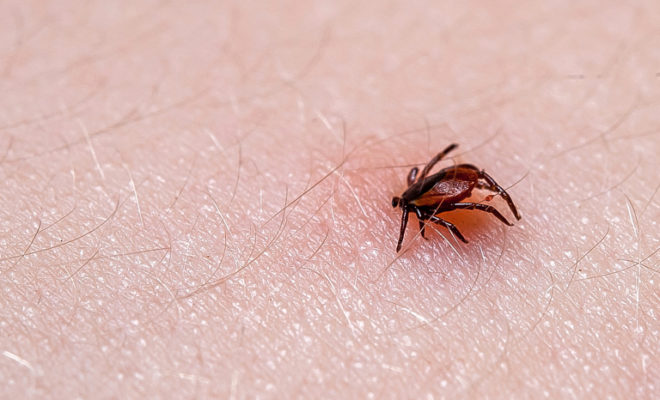
May marks Lyme Disease Awareness Month, reminding us to take care to avoid tick bites when exploring the great outdoors to avoid catching the disease.
With the recent news that diseases from mosquitoes, ticks and flea bites tripled in the United States from 2004 to 2016, experts are warning that it is more important than ever to protect ourselves from bites to prevent Lyme disease, which is currently the most common tick-borne disease in the United States.
Here we round up some key steps to take to help protect yourself this summer.
How can Lyme disease be prevented?
Preventing tick bites can prevent Lyme disease, as the disease is caused by the bacterium Borrelia burgdorferi which is passed to humans through the bites of infected ticks.
To avoid bites, keep arms and legs covered with long clothing when out in the countryside, use insect repellent, and reduce time spent in areas where ticks live, in particular long grass, humid undergrowth, prairies, meadows and fields.
Once home check your body for ticks, in particular areas such as armpits, folds of skin, the scalp and the navel, so you can remove them as soon as possible.
Although the Centers for Disease Control and Prevention (CDC) says that Lyme disease is spread to humans only through tick bites, research presented at the 2014 edition of the annual Western Regional Meeting of the American Federation for Medical Research suggested that it may also be passed to partners through sexual intercourse. Although more research is needed to support these findings, the study does highlight another reason to always practice safe sex.
What should I do if I find a tick?
The tick needs to be removed as soon as possible to avoid infection.
Use a pair of fine-tipped tweezers or a tick-removal tool from a pharmacy to grasp the tick as close to the skin as possible.
Then, pull it upwards with steady, even pressure and without twisting it, which can cause parts to break off and remain in the skin. If this happens, remove with tweezers, or if you are having difficulty, leave it and let the skin heal.
After removing the tick, clean the bite area with rubbing alcohol, an iodine scrub, or soap and water.
Don’t forget to check your pets
Dogs and cats can also catch Lyme disease so consider protecting your pets as well as yourself.
Although Lyme disease cannot be spread from pets to owners, dogs and cats can bring infected ticks into the house, so don’t forget to check them in case they are carrying any unwanted visitors.
Look out for symptoms
Catching Lyme disease quickly means that patients can be treated with the appropriate antibiotics in the early stages, which usually means a quick and full recovery. Being aware of the symptoms will help you seek treatment as soon as possible.
The typical symptoms include a fever, headache, and fatigue, as well as the most frequent and characteristic symptom, a skin rash called erythema migrans.
The rash is easily recognizable with a circular, bull’s-eye pattern, at least three to five centimeters in diameter and a white area in the middle. It can take days or weeks to appear, and although it is not painful nor itchy, it is the first stage of Lyme disease.
For those concerned about Lyme Disease, more information can be found online from the World Health Organization and the Centers for Disease Control and Prevention. JB
RELATED STORIES:
Lupus Awareness Month May 2018: Essential facts about the disease
Does wearing a face mask really protect against air pollution?